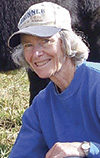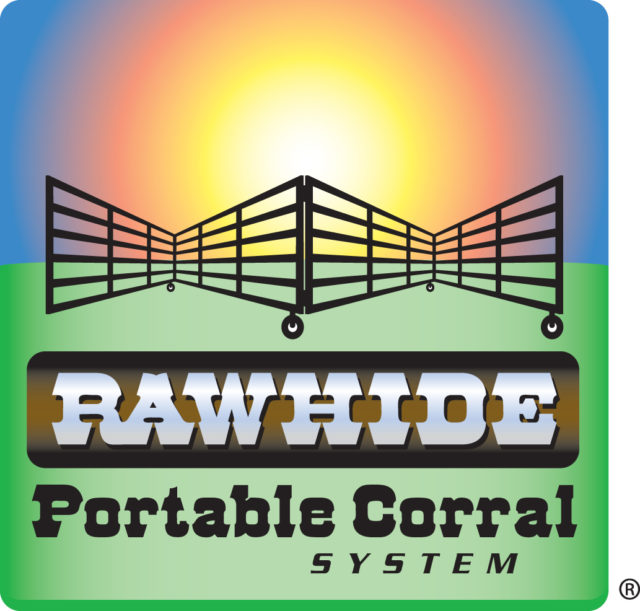Crossbred calves demonstrate increased weaning weights and yearling weights compared with calves of a single breed. Maternal heterosis in the crossbred cow increases her performance and that of her calves.
She reaches puberty earlier, rebreeds quicker after calving, has greater survival rate in her calves, stays in the herd longer and produces more pounds of calf during her lifetime.
Now some producers are utilizing paternal heterosis. Scott Greiner, professor and extension beef cattle specialist at Virginia Tech, says there has been less research done on paternal heterosis than on individual (crossbred calves) and maternal heterosis.
“The studies that have been done have shown some advantages in terms of fertility, a little improvement in number of cows settled and cows settled earlier in the breeding season.”
Anecdotally, hybrid bulls are thought to have more enthusiasm to cover more territory and breed a lot of cows. “This is an advantage in large pastures with more cows per bull, in larger range operations – as opposed to the smaller cow-calf herds in our part of the country,” Greiner says.
Mark Thallman, research geneticist at the U.S. Meat Animal Research Center (Agricultural Research Service) in Clay Center, Nebraska, has been working with crossbred cattle for a long time.
“We expect crossbred bulls to have greater longevity, mainly because crossbred cows have greater longevity. Heterosis generally improves fitness traits, hardiness, etc., and it’s reasonable to expect heterosis in bulls to have similar effects,” he says.
“Crossbred cows are certainly more fertile than purebreds, and I would expect that the bulls probably are, as well, but it’s not something we’ve proven,” he says.
Some of the breeds that have combined with Angus (both black and red) to create composites include Simmental, Gelbvieh and Limousin. Maine Anjou and Chianina went that route earlier – recording and documenting pedigrees. Even earlier, composite breeds were created with Brangus, Beefmaster and Santa Gertrudis. There are many opportunities today to utilize different breeds in a composite.
Practical crossbreeding
“The hybrid bull allows practical crossbreeding (and heterosis) in small herds and simplifies a crossbreeding system,” says Greiner. “The traditional rotational system or terminal-sire system is not applicable for a lot of our small herds.”
A small producer may have only one breeding pasture and one bull. It becomes impossible or too complicated to facilitate traditional crossbreeding systems.
“By using a hybrid bull, some heterosis can be introduced into the herd. By keeping those replacement heifers, maternal heterosis can be added in a simple, practical fashion, without having wide fluctuations in breed composition from one generation to the next.” The producer can keep the desired breed mix the same.
“In our region we have seen increased/renewed interest in crossbreeding,” Greiner says. “Many producers embrace the opportunity to inject heterosis with a composite or percentage bull.
And they are not swaying the genetic makeup of their herd too far one way or another as much as when using a purebred. Producers would like to minimize that variation as best they can,” says Greiner.
If producers are keeping heifers to go back into the herd, they can keep the breed mix the way they want it by using composite bulls. If they want to maximize heterosis, they could use a crossbred bull of two different breeds than the cow herd to create a four-way cross. “We don’t see much of that here, based on the breeds we’re using, but it can be a good option.
Our cow herds are predominantly Angus, but some of the other breeds certainly bring some things to the table, and if we can match things up right, this can be an advantage,” he says.
“Using a crossbred bull or composite of the same breeds as the crossbred cows makes it easier to manage a crossbreeding system,” says Thallman. “You get more heterosis in the bull himself if he’s an F1 than if he is a composite, but it’s not going to influence the heterosis in the progeny much,” he explains.
The use of a hybrid bull – whether F1 or composite – makes the mating system simpler than a rotational system that requires separate groups and more breeding pastures.
“If your cow herd is 50-50 and you use F1 bulls of those same two breeds, you lose some heterosis in the calves, but it’s a sustainable breeding program. The heterosis advantage is greater if you use bulls of different breeds than the cows. The less related the bulls are to the cows, the greater the heterosis in the calves. Maximum heterosis is obtained by breeding F1 cows to F1 bulls of a different pair of breeds. But changing breeds at every new generation introduces complications unless you are selling all the calves,” he says.
“Another option is a four-breed composite, for a crossbreeding program with very few management/grouping constraints. The cost of this simplicity is a little less heterosis and fewer options for sourcing outside genetics, but with four breeds the heterosis loss is minimal,” explains Thallman.
Same selection tools available
Matt Spangler, associate professor at the University of Nebraska, has done a lot of work with genetics, looking at integration of DNA information into EPDs. “For a while, people were concerned about using composite bulls because their marketing scheme required black-hided calves. But we now have homozygous black, homozygous polled composite bulls; things like color and horns are no longer a concern,” says Spangler.
“Simmental’s Hybrid Evaluation, Gelbvieh Balancer and LimFlex generate EPDs [expected progeny differences] for composite bulls. We have some of the same tools in composite bull selection as we have in purebred bull selection, including EPDs and accuracies and index values,” he explains. Cattlemen can be confident in what they are getting.
“This is the same as buying a purebred bull; you have the same tools available. This is something we didn’t have 25 years ago. Today, the majority of beef breeds are increasing the accuracy of their EPDs by using genomics.
We are also doing that for a lot of composite bulls. As long as the composite bulls are registered through a breed association, those exact same tools are available,” he says. A person can contact the breed association to get the same kind of genomic information on a composite bull as they’d find in a purebred.

“We now have a complete genetic profile and EPDs on composite and percentage bulls, and we can use those same selection tools,” says Greiner. This simplifies things and can help guide producers in the right direction.
“We’ve now put purebred and hybrids on the same playing field when it comes to selection,” he says. “We’ve taken some of the guesswork out of it, for selecting a good hybrid bull. People are now considering them seedstock.
“Just as importantly, seedstock breeders have embraced that concept and often produce hybrids for some of their customers. The quality and the genetic merit of the average hybrid bull today is a lot better than it was a few years ago.” Early on, about the best you could get was a crossbred bull that was not necessarily from a planned mating, but this isn’t true anymore.
Breeders today are flushing their best cows to make hybrids, and bull buyers have faith in the quality of bulls they are getting. Commercial cattlemen are looking at what these hybrids can offer their own breeding programs. There are many options to choose from, in types of hybrids and composites being created today – with various percentages of continental and British breeding.
“There are many more crossbred and composite bulls being used in the industry today than there were 10 or 15 years ago,” says Thallman. Many breed associations have opened up appendix registries or various means of registering and marketing those bulls.
“The genomic tests available on crossbred/composite bulls will continue to improve, and eventually there will be opportunities for applying genomics to composites to help select composite bulls – not just on within-breed variations but also to help direct breed contributions.
In some regions of the genome, one breed will be favorable – and in another region of the genome, the other breed will be more favorable. The ideal is to have a composite where you can have the best from both breeds,” he explains.
A person could then select bulls that represented the best traits from each breed and boost potential for optimizing the traits he or she wants. “This is an opportunity that is coming, but I don’t think our current generation of genomic tests is designed with that in mind.
This is a future development that I think is simply a matter of when, not if,” says Thallman. There are a number of exciting things on the horizon as we look at ways to improve our cattle.
Utilizing heterosis as a tool will be part of that picture for many commercial producers. “I worry that we’ve lost quite a bit of heterosis in U.S. cattle production. The nation’s cow herds are predominantly black. We can use crossbreeding and some composite bulls to inject more heterosis again,” he says. ![]()
Heather Smith Thomas is a freelance writer based in Idaho.
PHOTO 1: Crossbred and composite bulls tend to breed more cows.
PHOTO 2: Several different breeds have joined efforts to create composites, using both red and black hides. Photo by Heather Smith Thomas.









